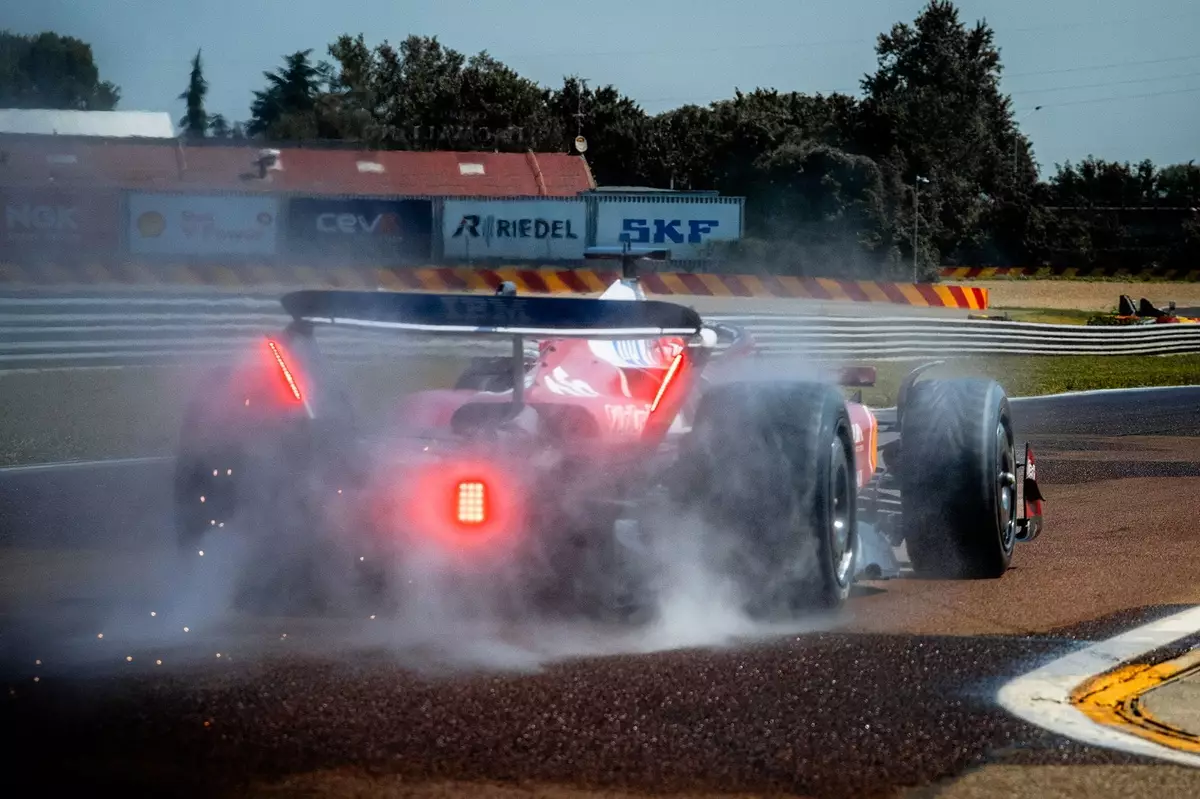When it comes to Formula 1, rain transforms an already intense competition into a perilous battleground. The spectacle of cars speeding along slick tracks generates stunning visuals, but also amplifies risks that test the limits of both drivers and machinery. At the heart of this equation are Pirelli’s blue-sidewalled ‘wet’ tyres, designed to combat the deluge of water that courses across the racing surface. These tyres possess the impressive capability to disperse up to 85 litres of water per second, but ironically, the conditions optimal for their use are rarely encountered in the fierce climate of competitive racing.
History shows us that wet races often turn into a game of survival rather than a straight contest of speed. Notable instances, like the dramatic Belgian Grand Prix in 2021 and the proceed-at-a-snail’s-pace Brazilian race last year, underscore the limitations of the current wet tyre design. Drivers are continually faced with the dilemma of risking pitting for wet tyres when conditions suggest a wait-and-see approach might net them better track positioning. This conundrum highlights the need for innovation in the technology of F1 wet tyres.
Pirelli’s Quest for Improvement
In a world where milliseconds define success, the question arises: how can Pirelli enhance the performance of their wet tyres? Pirelli motorsport manager Mario Isola has emphasized the necessity for the next generation of tyres to bridge the performance gap between wet and intermediate tyres. Currently, the extreme wet tyre falls short; it tends to overheat and degrade rapidly unless operating in truly extreme conditions, a scenario often punctuated by red flags.
To confront this issue, Pirelli is testing new formulations that could elevate wet performance into a new realm—one that makes these tyres reliable options during race conditions rather than merely a safety net behind the safety car. Demonstrating a holistic understanding of tyre dynamics, Isola has outlined a vision for the future: not merely to refine the characteristics of the wet tyre but to redefine its functionality within the sport.
The Testing Ground: Fiorano Circuit
Recent testing at Ferrari’s Fiorano circuit revealed both potential and challenges in the pursuit of better wet tyre compounds. Charles Leclerc and Zhou Guanyu participated in crucial tests utilizing a ‘mule car’—a machine designed to simulate how the new tyres might perform under the conditions expected in the 2026 season. However, mule cars introduce variables that complicate precise assessments, a nuance that could affect the validation process.
The pursuit of the ideal ‘crossover point’—where drivers should transition from slicks to wet tyres during changing conditions—remains a focal point in this tire saga. Currently, it’s posited that transitioning should occur when lap times drop to 112% of the dry pace. However, the previous iteration of Pirelli’s wet tyre only proved usable at about 120%, which is too late in most racing scenarios. The latest iteration had a much-improved crossover point at 118%; still, given its three-percentage-point shortcoming from the desired target, Pirelli finds themselves in an iterative cycle of trial and error.
Visibility: The Relentless Challenge
One cannot disregard another critical aspect intertwined with wet racing—visibility. Pirelli’s recognition of visibility as a persistent issue illuminates the many limitations of wet tyres. As water is displaced at dizzying rates and spray clouds shroud advancing cars, driving becomes a dangerous game—not merely a test of speed but a measure of skill and courage. The simple truth is that until visibility issues are addressed decisively, wet tyres will remain susceptible to scrutiny, regardless of enhancements.
The internal dynamics of tyre improvement, however, are delicate and demand not just technological advances but also a culture receptiveness to evolution in racing strategies. Amidst these discussions, it becomes clear that Pirelli is seeking a sustainable path forward that ultimately enhances safety without compromising the racing spectacle. The pursuit of innovative wet tyre technology reflects not only ambition but an acknowledgment of the intricate dance of engineering, safety, and the exhilarating unpredictability of Formula 1.
In this high-stakes arena, the dialogue around tyre performance is crucial. It encompasses the essence of racing, where decisions made on the fly can determine the outcome of championship battles. The story of F1 tyres isn’t just about materials and mechanics; it speaks to the very heart of the sport—a commitment to constant improvement and unyielding resolve in the face of mother nature’s unpredictable temperament.


Leave a Reply